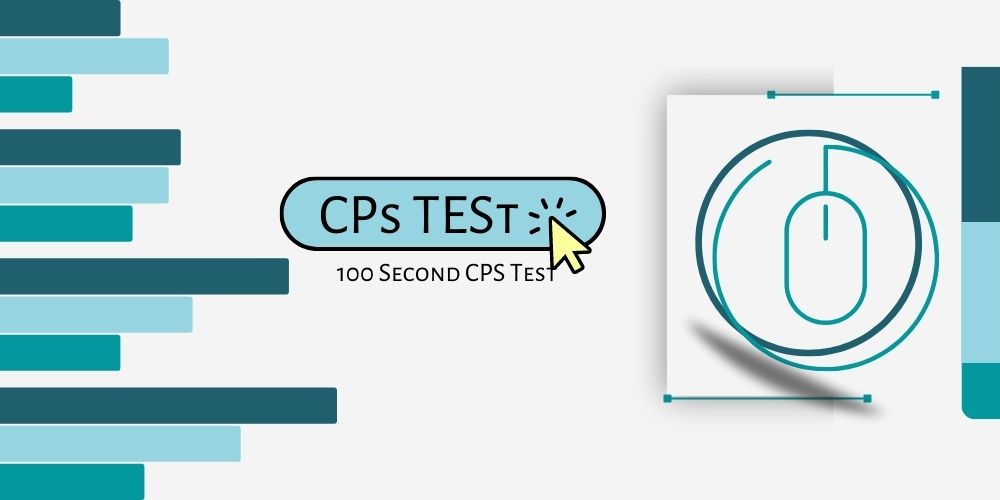You May Like These Free Online Tools:
100 Second CPS Test is the finest one, check how fast can you click with your stamina and patience in 100 seconds of time!
In the digital age, where efficiency and speed are paramount, the ability to click quickly and accurately has become increasingly important. The 100 Second CPS Test is a simple yet effective online tool that measures one’s clicking speed and accuracy within a span of 100 seconds. In this article, we will explore the significance of this test, its methodology, and how it can be a fun way to challenge and improve one’s clicking skills.

Understanding the 100 Second CPS Test:
The 100 Second CPS Test is designed to assess an individual’s Clicks Per Second (CPS) rate. CPS refers to the number of clicks a person can make within a second. The test provides an engaging platform where users can showcase their clicking prowess and compare their results with others.
Methodology:
To take the 100 Second CPS Test, one simply needs to visit the designated website or platform hosting the test. The user is presented with a timer that starts counting down from 100 seconds. During this time, the user must rapidly click on the given target area as many times as possible. Once the timer ends, the test automatically calculates the CPS rate and presents the final score.
Benefits and Significance:
- Reflex and Hand-Eye Coordination: The 100 Second CPS Test helps in improving reflexes and hand-eye coordination. By practicing and attempting to achieve higher CPS rates, individuals can enhance their ability to process visual stimuli and respond swiftly.
- Gaming and E-Sports: Clicking speed and accuracy are crucial in various gaming scenarios, especially in competitive e-sports. The 100 Second CPS Test can serve as a training tool for gamers to boost their reaction time and gain a competitive edge.
- Professional Productivity: In professions that involve extensive computer usage, such as data entry or graphic design, a higher CPS rate can significantly improve productivity. The test can be used as a self-assessment tool to monitor and enhance clicking speed, leading to increased efficiency at work.
- Friendly Competition: The 100 Second CPS Test provides an opportunity for friendly competition among friends, colleagues, or online communities. Users can compare their scores, challenge each other, and strive to achieve higher CPS rates, adding a fun and competitive element to the experience.
Tips to Improve CPS Rate:
- Practice Regularly: Like any skill, clicking speed and accuracy can be improved through consistent practice. The more you engage in the 100 Second CPS Test, the better you become at clicking swiftly and precisely.
- Focus and Concentration: Maintain focus and concentration during the test. Minimize distractions and strive to click on the target area with precision, avoiding unnecessary errors.
- Relaxation Techniques: Employ relaxation techniques such as deep breathing and maintaining a relaxed grip on the mouse or trackpad. Tension and stress can hinder performance, so staying calm and composed is essential.
The 100 Second CPS Test offers a simple yet effective way to measure clicking speed and accuracy. It serves as a valuable tool for individuals looking to enhance their reflexes, hand-eye coordination, and productivity. Whether for gaming, professional purposes, or friendly competition, this test provides an engaging platform to challenge oneself and improve clicking skills. So, why not give it a try and see how fast and accurate your clicking can be?







